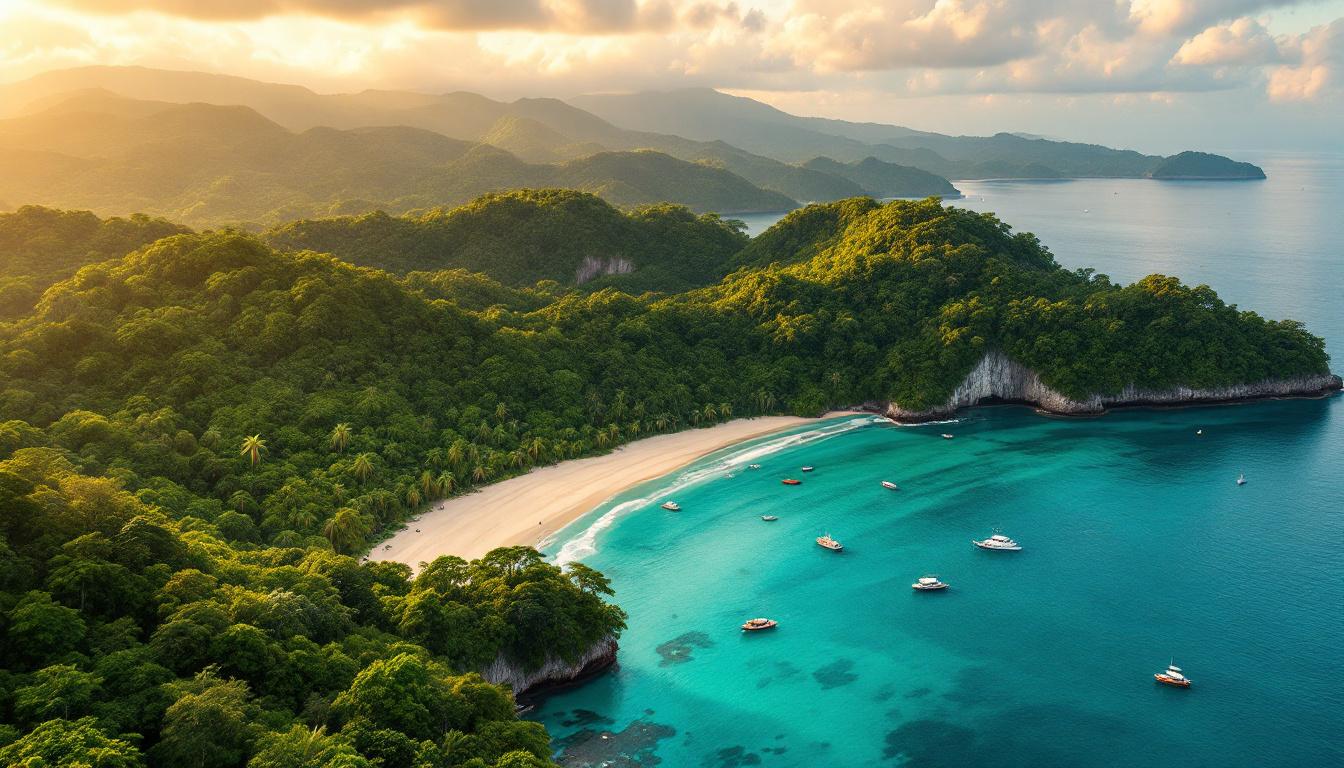Ilha Grande emerges from Brazil’s emerald coast like a secret whispered by the Atlantic Forest itself. This 193 km² island exists in a category entirely its own—the only place in Brazil where pristine Atlantic rainforest cascades directly into Caribbean-blue lagoons, protected by an absolute ban on cars that has preserved its soul for over three decades.
What makes this UNESCO World Heritage site truly singular isn’t just its size or beauty. It’s the extraordinary convergence of ecosystems that exists nowhere else on Earth’s coastlines.
Here, over 85% of Brazil’s most endangered forest meets bioluminescent waters in caves that glow like underwater galaxies, creating experiences that defy every expectation of what a tropical island can offer.
The forest-to-reef ecosystem that exists nowhere else
Where Atlantic rainforest meets pristine coral waters
Ilha Grande’s magic lies in its impossible geography—900+ endemic species living within walking distance of crystalline lagoons. The T10 trail winds through primary Atlantic Forest before emerging at Lopes Mendes Beach, where forest canopy literally overhangs Caribbean-quality sand. This transition from endangered rainforest to pristine reef happens nowhere else along Brazil’s 4,600-mile coastline.
The bioluminescent cave system hidden from guidebooks
Deep within the island’s protected core, Gruta do Açaí glows with natural fluorescence—a phenomenon requiring specific mineral compositions and water temperatures found only here. Local guides, sworn to protect these fragile ecosystems, lead small groups through underwater passages where touching the walls creates trails of blue light. No other Brazilian destination offers this combination of forest immersion and bioluminescent cave exploration.
The car ban that created Brazil’s most authentic island
How 1993 changed everything about island life
When Ilha Grande’s notorious prison closed in 1993, residents made a radical choice—permanently banning all motor vehicles to preserve their island’s character. This decision created Brazil’s only car-free coastal destination, where hiking trails and boat routes remain the sole transportation methods. The result: an island where traditional fishing communities in Maguariquessaba and Passaterra still practice sustainable mussel farming exactly as their grandparents did.
The boat-only access that filters out casual tourists
Reaching Ilha Grande requires commitment—a deliberate 4-hour journey from Rio plus 1-hour boat crossing from Angra dos Reis. This natural filter system ensures that only travelers seeking authentic experiences make the pilgrimage. Unlike Brazil’s drive-up beach destinations, every visitor arrives by water, creating an immediate sense of separation from the mainland’s chaos.
The community protection that keeps mass tourism away
How 3,000 residents guard their paradise
Vila do Abraão’s 3,000 residents have mastered sustainable tourism through necessity, not marketing. Local families run eco-lodges using traditional building techniques, while fishing cooperatives offer authentic experiences like dawn net-casting and afternoon mussel harvesting. Their protection methods are subtle but effective—no resort developments, limited nightlife, and community-enforced quiet hours that preserve the island’s contemplative atmosphere.
The sustainable initiatives that work in practice
Ilha Grande’s residents created Brazil’s most successful community-based conservation model. Mussel farming projects generate income while filtering coastal waters, traditional fishing methods prevent overharvesting, and strict building codes maintain architectural harmony. UNESCO recognition in 2019 validated what locals had known for decades—their protection strategies work better than government regulations.
The exclusive experiences impossible anywhere else in Brazil
Adventures requiring serious commitment
Ilha Grande’s 100+ beaches range from accessible to genuinely remote, with some requiring 6-hour forest hikes or chartered boat access. Parnaioca Beach offers complete solitude—no facilities, no crowds, just pristine sand where Atlantic Forest meets ocean. These experiences demand physical effort and planning impossible at drive-up destinations, ensuring authentic solitude for committed travelers.
The July advantage other destinations can’t match
During Brazil’s winter months, Ilha Grande offers perfect 24°C temperatures while Rio swelters or chills unpredictably. July brings crystalline visibility for snorkeling, calm seas for boat excursions, and comfortable hiking weather through rainforest trails. The seasonal sweet spot that makes Ilha Grande Brazil’s only year-round outdoor paradise.
Ilha Grande stands alone as Brazil’s only destination where environmental protection, community commitment, and natural wonder converge into something approaching perfection. This isn’t just another tropical island—it’s proof that authentic paradise still exists when communities choose preservation over profit.
The boat from Angra dos Reis departs daily, carrying those wise enough to seek Brazil’s last protected coastal secret before the world discovers what locals have guarded for thirty years.
